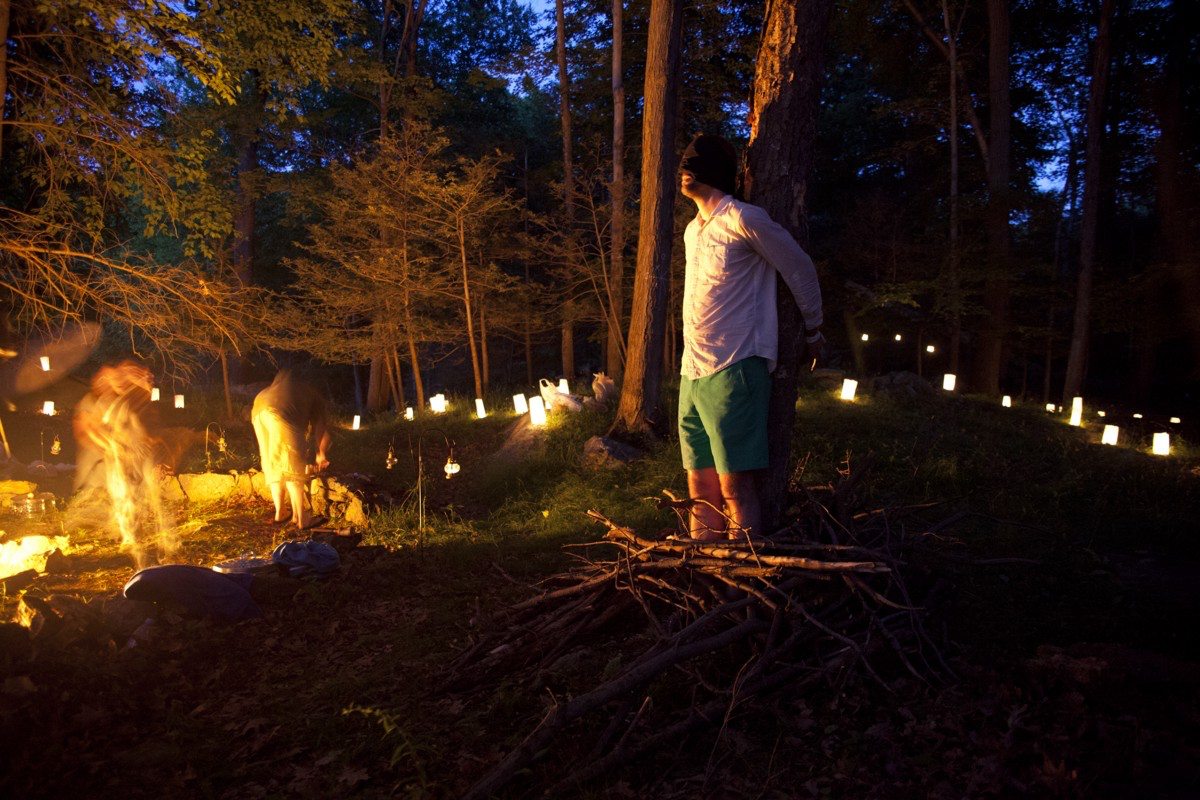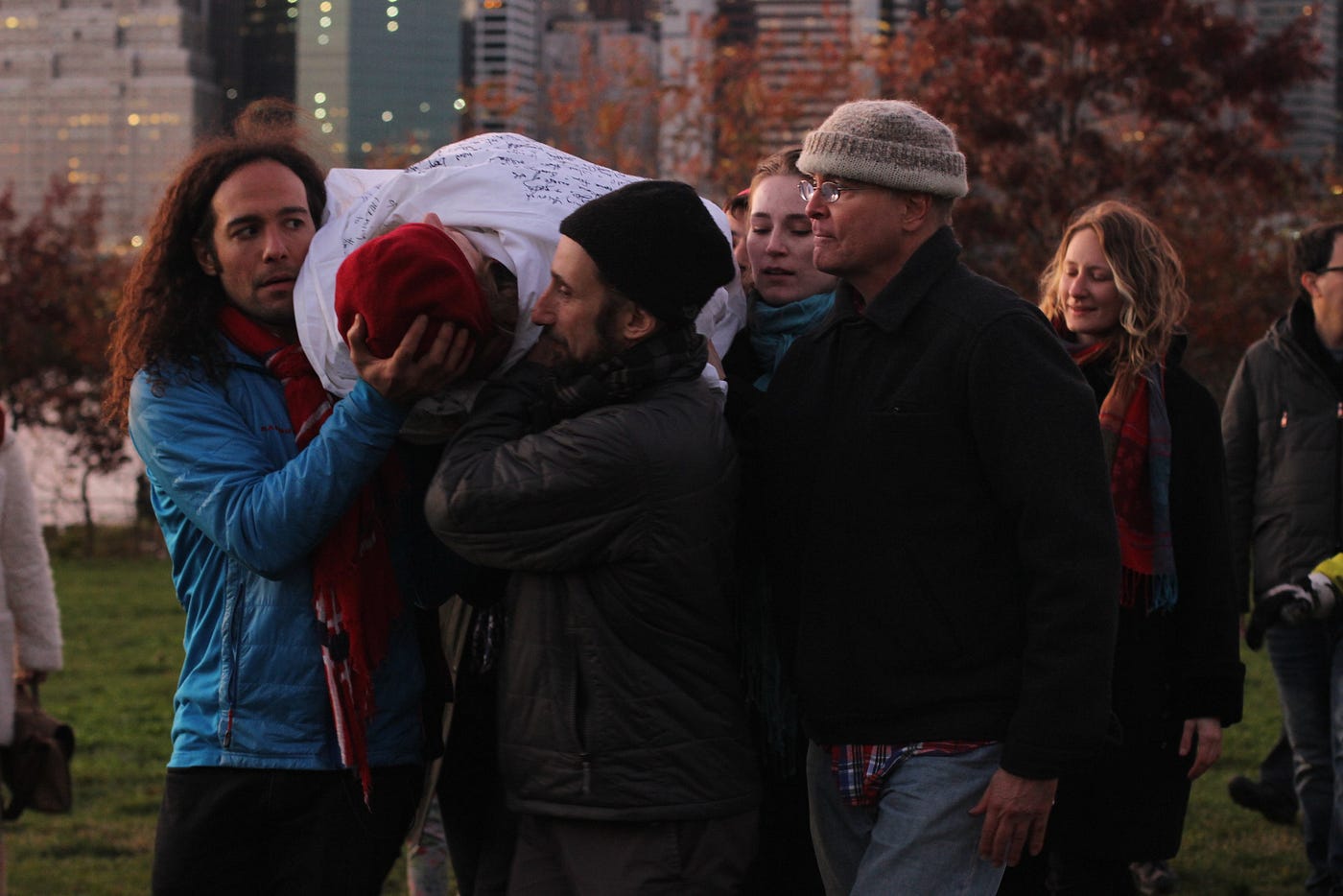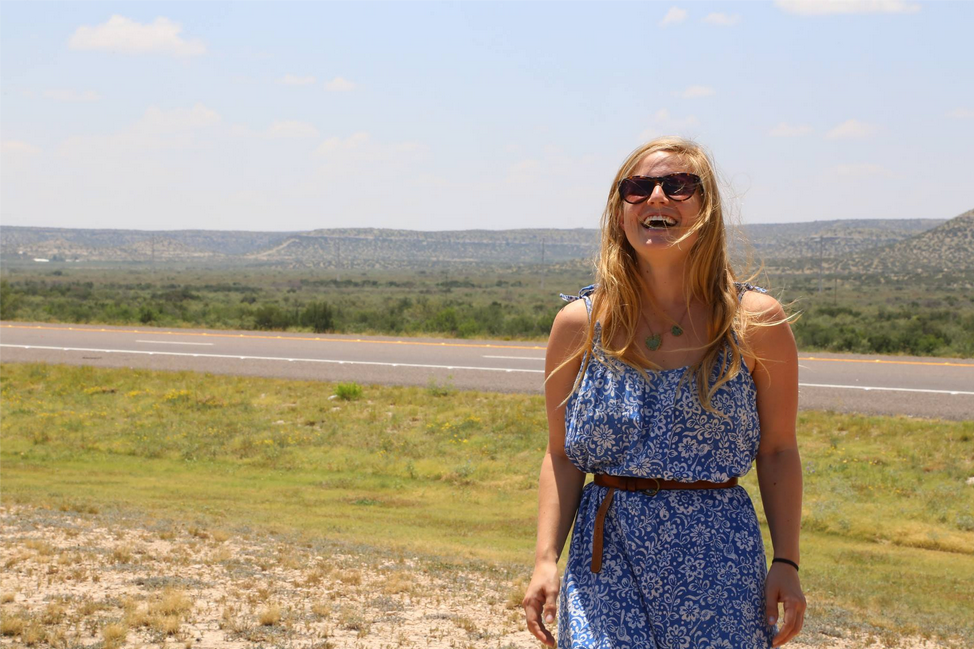
Imagine waking up to find yourself in a performance that is all about you
Odyssey Works is known for creating intense, bespoke pieces of living immersive for a single person at a time. Their method includes deeply studying the life of one individual and creating intimate, meaningful performances that can last days, weeks, or months. The team of artists and designers go to such lengths as drinking their participant’s favorite beverages, watching their favorite films, listening to their favorite albums, and even trying to dream about them.
The organization was co-founded in 2001 by Abraham Burickson and Matthew Purdon, and is now helmed by Burickson and Ayden LeRoux. LeRoux and Burickson co-wrote Odyssey Works: Transformative Experiences for an Audience of One, which was published by Princeton Architectural Press in 2016. They lead regular workshops on experience design and learning to fall in love with a complete stranger. For the first time in five years, Odyssey Works has put out a call for participants as part of an intensive workshop program they’re holding at a beachside retreat in Mexico this summer. (Applications to be the participant are due April 20.)
We caught up with LeRoux with our Immersive 5 as Odyssey Works prepare for their new work.
This interview has been lightly edited for clarity.

No Proscenium (NP): What does “immersive” mean to you?
Ayden LeRoux (ALR): The definition of “immersion” is linked to water. Right now I’m writing an essay about how water is one of the final places where we are truly apart from our phones and technology: how swimming brings me to a meditative state, and how our bodies respond to sinking and floating. I’ve been thinking a lot about the paradox of how immersion can come about by feeling contained in a small environment (like a sensory deprivation tank), or it can be about feeling like you are in an expanse that you can’t see the limits of (the ocean).
When I was in high school, I was an exchange student first to Italy, then to Peru. In order to learn a new language it was important to cut myself off from English, to be “immersed” in Italian and Spanish and the cultures. These are just musings riffing off the word “immersive,” but I think there’s a lot to be learned in the realm of “immersive” experiences and theatre by looking at these two examples because both involve abandoning parts of the self in order to distill and attune to another. In a lot of ways, I think installation is mother of all things immersive. (I studied visual art though so I’m biased.)
NP: Why (or why don’t) you think of your work as immersive?
ALR: I suppose our work is immersive because it bleeds the boundary between so-called “real life” (by this I mean, the everyday people, places, and things that populate someone’s world) and crafted experience (the things that our team inserts into your world). It is the dissolving of this boundary that seems to be most powerful for our participants. The decisions they make have real impact. It’s not just a construct, or a building you enter for three hours and then leave to go home to your wife and kids. Our participants often say that they have a heightened state of attention and receptivity during their Odyssey (I certainly felt this during mine). What’s remarkable is that it doesn’t feel separate or apart from life (or at least, it didn’t for me). It just registers as super-attentiveness.
Get Kathryn Yu’s stories in your inbox
Join Medium for free to get updates from this writer.
SubscribeSubscribe
We often think that we need immersion to enter into a state of complete curiosity, wonder, and attention that allows us to see the potential in everything, but I try to teach my creative writing students that attentiveness is an essential quality for writers so that they can not just look, but see the world. What I love most about Odyssey Works is that we are extending an invitation to say, you can see your whole world in this way every day.

NP: What was the moment where you knew that this kind of work was for you?
ALR: I’ve been a fan of letter-writing since a young age and have been exchanging letters with my dear friend Marjorie for more than half my life. I relish the beauty of handwriting—how intimate, human, and personal it is to tuck your thoughts into an envelope and know that, for mere cents, those pieces of paper can journey across the country ushered through the hands of many strangers and arrive at the home of my dear friend. Epistolary exchange operates at its own pace and timeframe. It’s tactile, it’s vulnerable, and there’s direct address (all components of most immersive work). When I was in college, I was studying sculpture and installation and longed for art to feel as personal and powerful as receiving a letter.
My friend Ariel introduced me to Abe, who co-founded Odyssey Works, and I had the thought, “Oh! This is what I’ve been looking for.” We started collaborating right away, but in a way, it has been an unexpected sidestep. I really feel at home as an artist and a writer, but just so happens that I found my way to this practice which embodies so many of my values about how to be human.
Sometimes when I sit on panels or go teach at universities, I laugh at how I ended up with this area of expertise in experience design and immersive theatre. I don’t identify as a designer, and I’m not a theatre-geek. I’m quite a luddite, so VR is a mystery to me. Genre feels like a trap in a lot of ways; I want to examine the intention of what the work is trying to put forth into the world above its categorization. This is at the heart of how we approach experience design in Odyssey Works: you’re free to use any form to evoke a desired feeling(s). In this way of thinking, sex work and writing letters can have the same impact, the end result potentially being intimacy, closeness, and freedom to be who you are, but with two entirely different vessels to evoke those feelings.

NP: When designing — regarding your approach to presence, agency, safety, and consent — how do you cue the audience as to what’s expected of them and the nature of the content they might encounter?
ALR: Our participants apply to receive an Odyssey and the questionnaire they fill out is extensive. Sometimes it takes people 10 hours to complete. The nature of being asked so many profound questions about your life demands openness and vulnerability, so there’s this real process of opting-in to the Odyssey. We take extreme care guarding the privacy of the information we receive from a participant, and we interview many of their close friends and family in order to determine what the “no-go zones” are, or what topics, experiences, or people are off-limits. We establish a safe word, too, so that they can let us know if they need to stop what is happening. Even though so much of what shapes the participant’s experience is about surrender and not knowing what’s going to happen to them during the Odyssey, we take it incredibly seriously that we have someone’s life in our hands as our creative material.
NP: What works — be they creative works, books, or other inspirations — have shaped your current work?
ALR: There are so many, but Land Art is probably the thing that has most dramatically shaped how I think about the world and the work we do. It emerged in the 1960s and 70s as artists started to retreat from galleries and museums to use the earth as a material. Folks like Robert Smithson, Michael Heizer, Nancy Holt, Walter de Maria, Christo and Jeanne Claude, and Maya Lin wanted to make work out in the landscape, and many of their works are massive, such that they become immersive. The journey to the art work, the pilgrimage to get to a very remote place, is very similar to an Odyssey (in fact, I received an Odyssey in November 2016 that was all about this very idea). Many earthworks live out in the desert of the Southwest, and I think the way that immersive theatre is a retreat from the stage and the black box is actually quite similar to the retreat artists were making from the white cube.
Applications to be the participant in the next Odyssey from Odyssey Works are due April 20.
View all of our Immersive 5 Interviews.
No Proscenium is a labor of love made possible by our generous Patreon backers: join them today!
In addition to the No Proscenium web site, our podcast, and our newsletters, you can find NoPro on Twitter, Facebook, YouTube, Instagram, in our Facebook community Everything Immersive, and on our Slack forum.




















Discussion